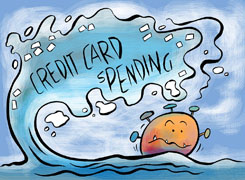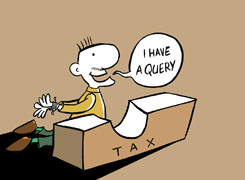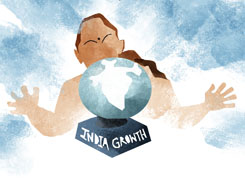Iam under debt of Rs 10lac and my salary is 23k per month. How to come out from debt and i need to get debt free. So, please guide me.
Ans: Being in debt can be overwhelming, especially on a limited monthly income. But with disciplined planning and commitment, you can gradually achieve financial freedom. Here’s a detailed guide to help you pay off your Rs 10 lakh debt and build a stable financial foundation.
Step 1: Calculate Your Monthly Expenses and Set a Budget
Start by understanding your cash flow. Track every expense to get a clear picture of your spending.
Essential Expenses: These include rent, food, utilities, and any other basic needs.
Discretionary Expenses: Cut back on non-essentials like dining out, entertainment, and shopping.
Savings and Debt Repayment: Dedicate any amount left after essential expenses towards debt repayment.
Tip: Keep a written budget or use a mobile app to monitor your expenses. Reducing discretionary spending will help increase the amount available for debt repayment.
Step 2: Increase Income if Possible
Boosting income, even slightly, can significantly accelerate debt repayment. Here are some ideas:
Freelance or Part-Time Work: If possible, look for freelance work in areas you’re skilled in, like writing, tutoring, graphic design, or programming.
Overtime or Extra Shifts: If your employer offers overtime, consider taking it on to increase your income.
Sell Unwanted Items: Sell items you no longer need, such as electronics, clothes, or furniture, to generate additional cash.
Increasing your income, even temporarily, can help you pay off your debt faster.
Step 3: Create a Debt Repayment Plan
List all your debts, including outstanding amounts, interest rates, and due dates. Here are two strategies for paying them off:
Snowball Method: Pay off smaller debts first to gain momentum, then tackle larger ones. This provides psychological motivation by clearing debts faster.
Avalanche Method: Focus on debts with the highest interest rates first. This method saves more on interest in the long term.
Choose the strategy that suits you best and start making extra payments each month.
Step 4: Prioritize High-Interest Loans and EMI Payments
Debt with higher interest can escalate quickly, so prioritize clearing them first. Some common examples include:
Credit Card Debt: If part of your debt is on credit cards, try to pay it down as quickly as possible. Credit card interest rates are often the highest.
Personal Loans: If your Rs 10 lakh debt includes high-interest loans, prioritize these over lower-interest obligations.
Contact your creditors to explore if they can reduce your interest rate temporarily. Any reduction helps ease the debt burden.
Step 5: Consider Debt Consolidation Options
Debt consolidation combines multiple loans into a single, lower-interest loan, making it easier to manage. Options include:
Personal Loans: Look for a lower-interest personal loan to pay off existing debts. This can reduce the overall interest burden.
Balance Transfer: If a major portion of your debt is on a credit card, look for a card offering a low or zero-interest balance transfer option.
Be cautious of fees associated with consolidation options and make sure to do thorough research. Consolidation can simplify payments and potentially save you money on interest.
Step 6: Start a Small Emergency Fund
While repaying debt is crucial, having a small emergency fund (around Rs 5,000–Rs 10,000) can help you avoid additional debt. This fund is for unexpected expenses like medical emergencies or car repairs.
Building a small emergency cushion ensures you don’t rely on credit if unplanned expenses arise. Once your debt is cleared, you can gradually build a larger emergency fund.
Step 7: Avoid Taking on New Debt
Avoid credit cards, loans, or any new debt until you’ve repaid the current amount. New debt will delay your goal of becoming debt-free.
Instead of borrowing, prioritize saving for any purchases. Practicing patience with spending decisions will help prevent additional debt.
Step 8: Automate and Regularize Payments
Set up automated payments for your debt EMIs and monthly bills. Automation helps prevent missed payments, which can incur penalties and hurt your credit score.
If automated payments aren’t possible, set reminders to ensure timely payments.
Step 9: Track Progress and Stay Motivated
Track your progress each month and celebrate small wins, such as reaching specific milestones in debt reduction.
Seeing your debt balance decrease, even gradually, can keep you motivated.
Step 10: Seek Professional Guidance If Needed
If you feel overwhelmed, consider seeking guidance from a Certified Financial Planner (CFP). They can help you devise a structured plan tailored to your specific financial situation.
A CFP can also provide personalized advice on managing and reducing debt efficiently.
Finally
Your determination to achieve a debt-free life is commendable. By following these steps and staying disciplined, you’ll gradually pay off your debt and move toward financial freedom. Remember, small steps today will lead to a financially secure tomorrow.
Best Regards,
K. Ramalingam, MBA, CFP
Chief Financial Planner,
www.holisticinvestment.in
https://www.youtube.com/@HolisticInvestment





























